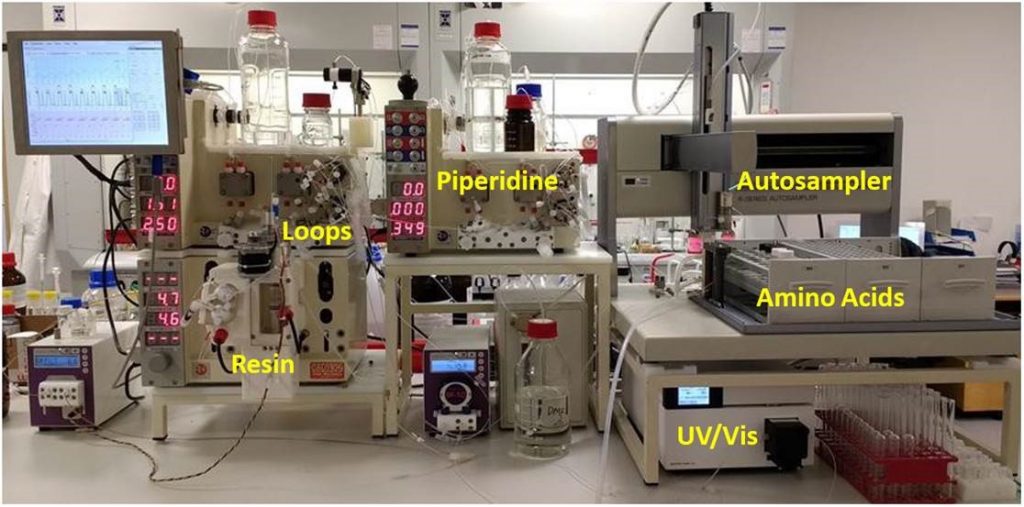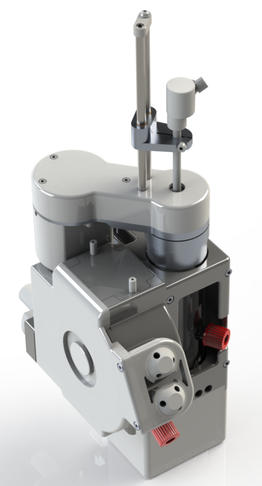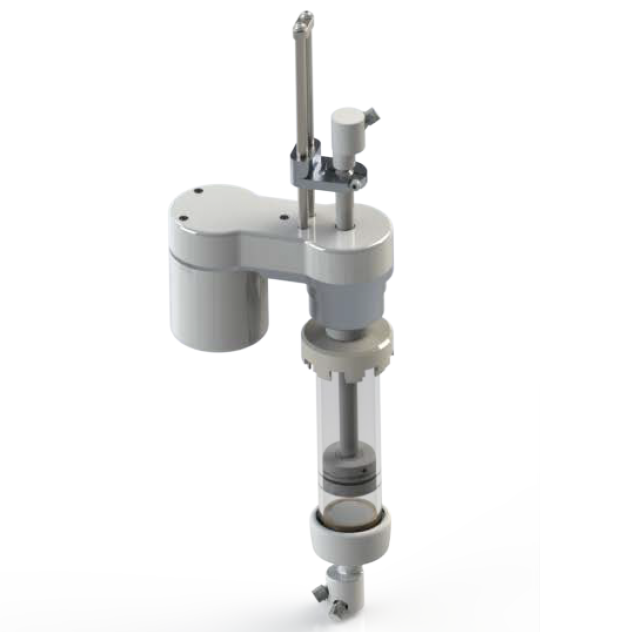Variable Bed Flow Reactor for Solid Phase Peptide synthesis
Peptide derived drugs are an increasingly important focus of therapeutic pharmaceuticals. Continuous flow synthesis of peptides (flow chemistry) offers a number of important advantages to traditional batch methodologies. Over the last 2 decades through a number of excellent papers academic groups have demonstrated the clear benefits to be derived from continuous flow synthesis of peptides [1]. As we write this section there is still no commercially available continuous flow peptide synthesis platform.
Nearly 4 years ago Vapourtec formed a collaboration with New Path Molecular Research (NPM, a company founded by Prof Steven Ley based in Cambridge, UK). The aim of this collaboration was to automate the synthesis of peptides in continuous flow. Through this collaboration Vapourtec developed the Variable Bed Flow Reactor (VBFR) and NPM chemists synthesised difficult peptides of up to 45 amino acids. Over the years Vapourtec has developed the software and technology and is now pleased to be releasing this innovative technology as a commercially available system. A further collaboration in 2019 with Prof Seeberger’s group at Max Planck Institute provided the first publication using the Vapourtec peptide synthesis technology [2].
Benefits of continuous flow approach vs traditional batch synthesis
All the usual benefits of flow chemistry can be translated to improved synthesis of peptides in continuous flow however the addition of the Vapourtec VBFR technology ensures minimum reactor volume with, no channelling, minimal dilution of reactants and efficient resin wash cycles. Benefits of continuous flow over tradition batch are:
- More repeatable, predictable and consistent synthesis by virtue of precise temperature control and reproducible mixing.
- Higher purity peptides. In flow peptide synthesis using the VBFR the resin is constrained, even if couplings are incomplete the synthesis is biased towards the desired peptide, this is not the case with the agitated resin in a batch reaction where the position of each resin bead is changing throughout the synthesis.
- Access to longer peptides and small proteins, e.g. 50 to 120 mer
- Faster coupling-deprotection-wash cycles
- Lower excesses of valuable reagents are required
- Consumption of solvents for resin washing is reduced
- Higher quality real-time data generated including resin volume change
Flow and batch SPPS is fundamentally different, this brief animation explains how. Click here
How is a Vapourtec peptide synthesis system configured?
The Vapourtec peptide synthesis system is a group of accessories that can be integrated with any Vapourtec R-Series system to facilitate continuous flow peptide synthesis. The minimum configuration of the system for peptide synthesis is as follows:
- 4 independently pumped channels
- At least 2 injection loops
- At least one reactor heater module (R4)
- R-Series software + license extension
- Autosampler, either GX-271 or GX-241 are both suitable
- SF-10 pump operating as a precision back pressure regulator
- Optionally but highly advantageous, a UV detector with minimum of two channels
Once the above minimum system is available the following accessories can be added to complete your Vapourtec continuous flow peptide synthesis platform:
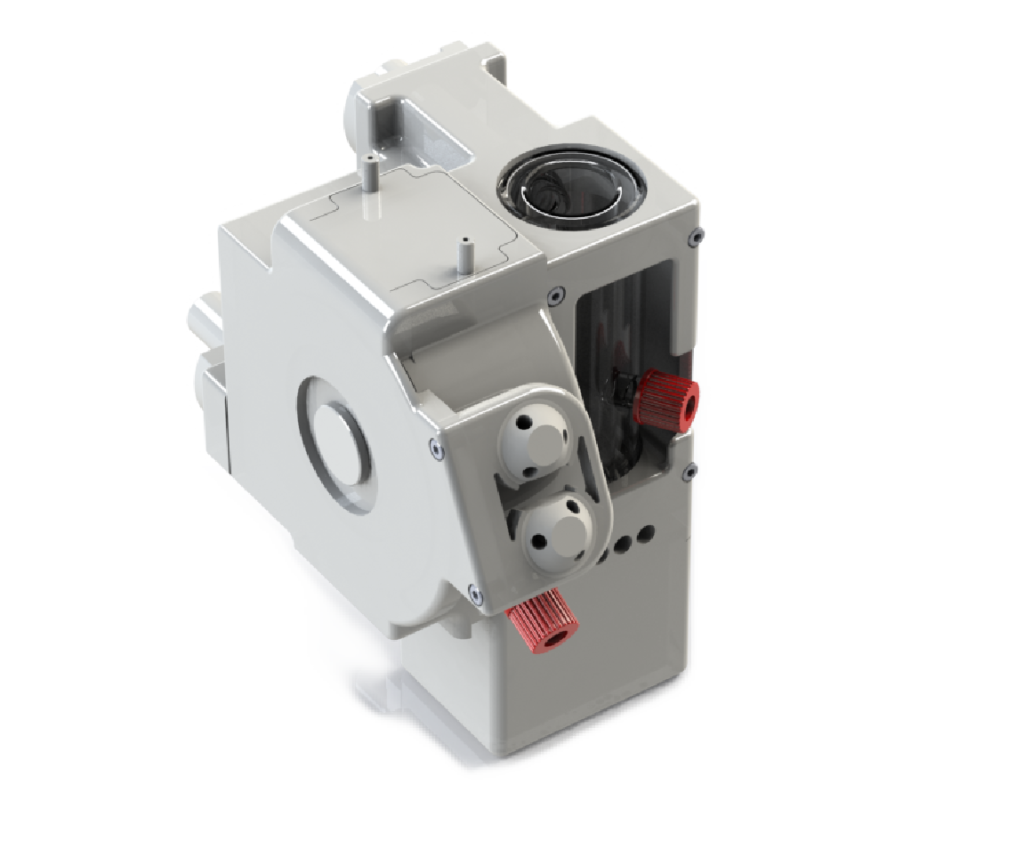
- A “Peptide synthesis reactor housing”. This housing allows the activation reactor and VBFR to be independently heated to the chosen temperatures for the synthesis.
- A variable bed flow reactor (VBFR). There are 3 sizes available
- A reactor compression controller used to control the VBFR.
- A 5 day tailored training package. This training package is mandatory for all customers purchasing their first Vapourtec continuous flow peptide synthesizer.
What does the inline data include?
Vapourtec’s R-Series software data records all the system data presenting these as real time graphs showing different variables. The data includes UV data and reactor volume change data.
All data from R-Series software can be exported via a CSV file and manipulated Microsoft Excel or similar.
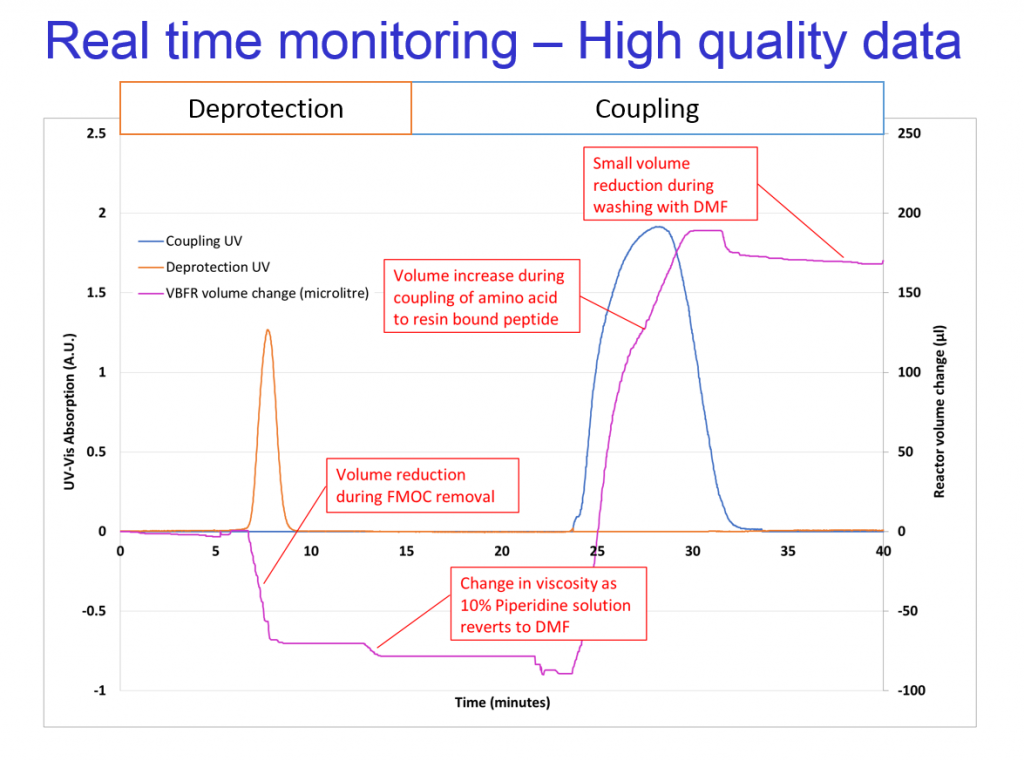
Four different sizes of VBFR are available for peptide synthesis
The 4 sizes are identified by the internal diameter of the reactor in mm. The available sizes are; 6.6 mm, 10.0 mm, 15.0 mm and 35.0 mm.
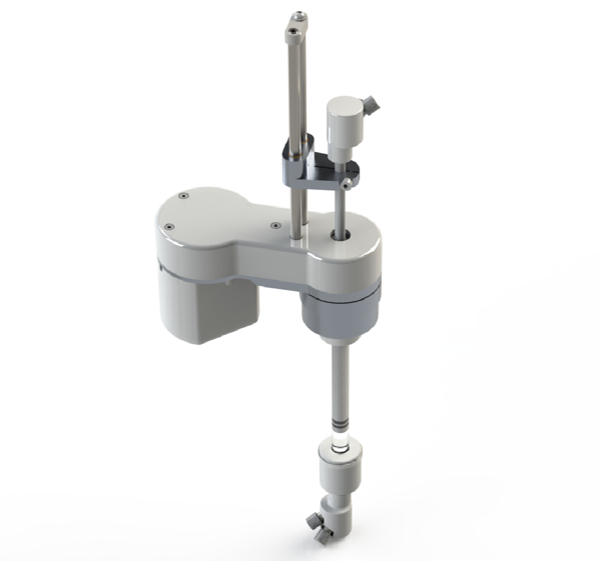
6.6 mm diameter reactor
- Working volume: 0.03 ml to 4.0 ml
- Temperature range: Ambient to 100 °C
- Maximum operation pressure: 20 bar
- Suitable for 50 mg to 400 mg of resin
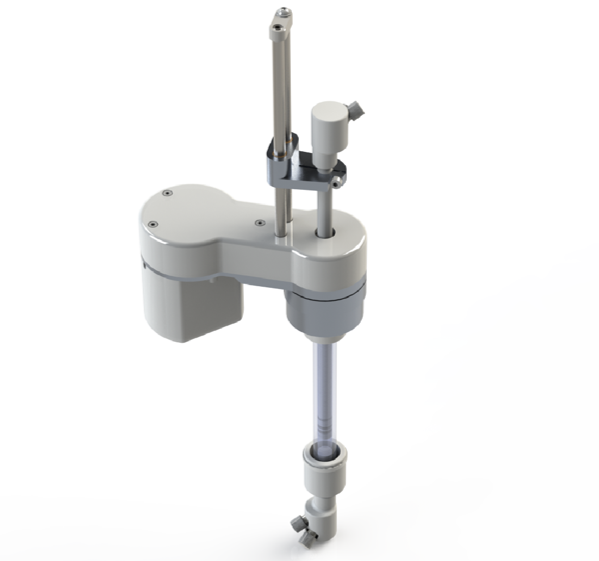
10.0 mm diameter reactor
- Working volume: 0.12 ml to 9.5 ml
- Temperature range: Ambient to 100 °C
- Maximum operation pressure: 15 bar
- Suitable for 100 mg to 800 mg of resin
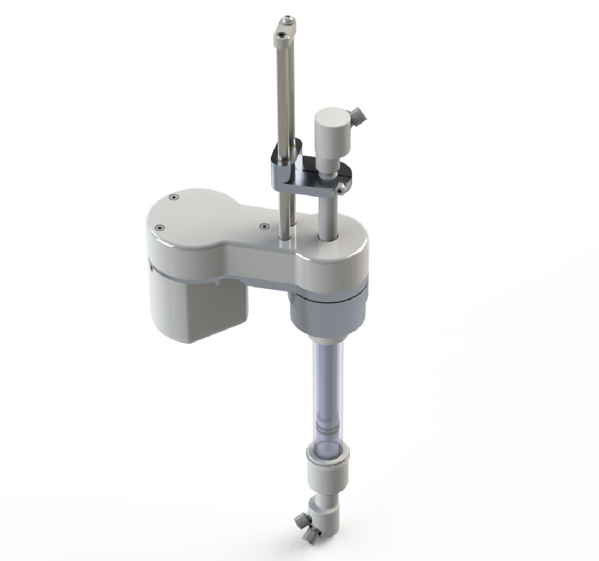
15.0 mm diameter reactor
- Working volume: 0.4 ml to 21.0 ml
- Temperature range: Ambient to 100 °C
- Maximum operation pressure: 10 bar
- Suitable for 250 mg to 2 grams of resin
35.0 mm diameter reactor
- Working volume: 5.0 ml to 115.0 ml
- Temperature range: Ambient to 100 °C
- Maximum operation pressure: 5 bar
- Suitable for 1 gram to 10 grams of resin
What else will I need to use the peptide synthesis system?
- You will need a Vapourtec R-Series flow chemistry system with 4 pump channels
- A Vapourtec configured liquid handler for feeding reagents
- Vapourtec R-Series software
- A Vapourtec reactor compression controller module
- The reactor must be mounted in a Vapourtec peptide synthesis reactor assembly, this incorporates the heat exchanger
- A UV detector with two or more channels

